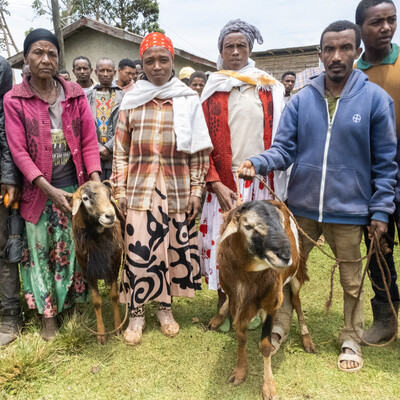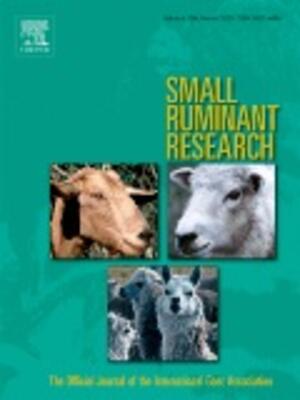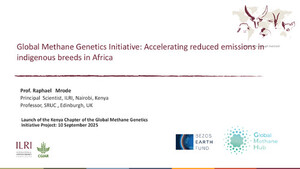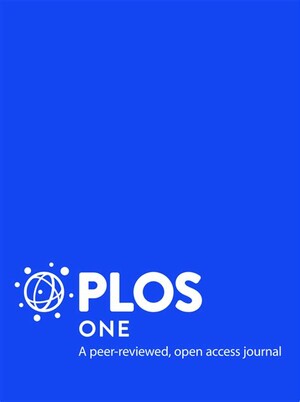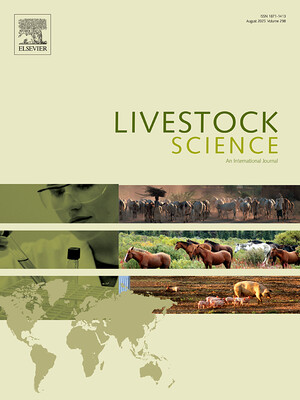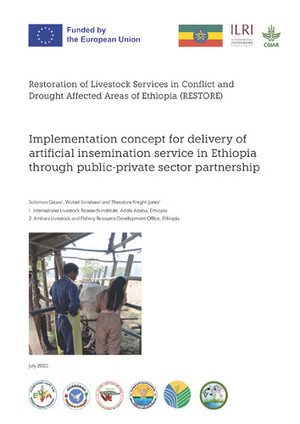
Scientists in Africa explore use of surrogate sires to improve small ruminant breeds
In Pullman, Washington, the director and reproductive biologist at the Center for Reproductive Biology, Jon Oatley, and his team have generated a gene-edited goat, known as surrogate sire—a goat that is capable of ‘hosting’ sperm from a different buck. Oatley believes that this technology is the key to unlocking the growing demand for food and nutritional security and has paired up with scientists at the International Livestock Research Institute (ILRI) to apply the technology.
Globally, the livestock sector has a fundamental role to play in providing nutrition for the world’s population, which will be nearly 10 billion people by 2050. The United Nations 2030 Agenda for Sustainable Development focuses on among other goals, ensuring the livestock sector will contribute to achieving the Sustainable Development Goals (SDGs) by providing the world with reliable supply of milk, meat, eggs and dairy products to meet increasing consumption of animal-sourced foods in many developing countries. To achieve this goal, scientists from across the globe are exploring innovative ways of using science and technology to support sustainable livestock systems that meet the growing demand for animal products.
‘Addressing food security now and into the future requires a holistic approach to societal stewardship through improving agricultural practices. By integrating innovative technologies with conventional farming practices, we can improve the efficiency and resiliency of livestock to generate protein for human consumption. In this way, we can realistically aim for feeding more with less, that is, less use of land and natural resources, less use of antibiotics and hormones, while also having less impact on the environment.’- Jon Oatley.
One area of focus for scientific research is the use of genetics to improve livestock breeds, which, in turn, improves their productivity. Among the several problems livestock geneticists are trying to solve is the distribution of genetic material, which is a key challenge in breeding improvement. Currently, most of the world’s livestock breeding relies on a process known as artificial insemination (AI), a technique where semen with live sperm is collected from a ‘superior’ male, split into hundreds of lots, frozen in liquid nitrogen, and subsequently used to inseminate females at a specific time with the help of trained AI technicians. While this is a powerful tool for livestock improvement, there are limitations which currently hinder its use in Africa and especially in small ruminant breeding. AI needs well-trained operators and specialist equipment. Most critically, it also requires an unbroken chain of liquid nitrogen storage, the ability to detect the narrow window of time in which the female is fertile, and to get the right sperm to that female within that time window. This makes for a fragile system, which must work over long distances often with poor infrastructure and which frequently fails.
Steve Kemp, leader of ILRI’s genetics research program and co-leader of a reproductive technologies program at the Centre for Tropical Livestock Genetic and Health (CTLGH) says ‘improving the performance of livestock requires the right genetics, in the right place at the right time, which is hard to get done at scale. Surrogate sires can be distributed and left to do what comes naturally and are more efficient at detecting heat than a farmer would be!’
Oatley’s team have successfully used gene editing approaches to knock out a gene specific to male fertility known as NANOS2 in the animal embryos, so that they no longer produce their own sperm and can act as surrogate sires. The Oatley team has shown that such males are born sterile, but after transplanting stem cells from donor animals to their testes, they begin to produce sperm containing only contain genetic material from the donor. This effectively multiplies-up each donor so that many males are able to distribute their genetic material, allowing for the spread of desirable characteristics in livestock systems without the need for artificial insemination.
A video developed by Washington State University College of Veterinary Medicine where Jon Oatley provides insights into his surrogate sires program and how safe selective breeding practices can lead to increased food production and food security.
At the same time ILRI and University of Nairobi researchers are isolating, culturing and storing germ cells from Galla goats so that they could be used for transplantation into surrogate sires. Galla goats are known as the king of milk and meat production in many regions in Africa as they are resistant to gastrointestinal parasites and very well adapted to arid and semi-arid areas. Growing up to 70kgs, they have the ability to support a future rich in meat production for the region. New breeds have the potential to be resistant to disease.
James Nguhiu Mwangi, professor at the University of Nairobi says, ‘with time, the African governments will embrace this technology as a way of improving breeds and overcoming challenges of livestock disease that hinder animal productivity and so improve the livelihoods of livestock-dependent communities’.
Nabulindo Wilkister, PhD student from the University of Nairobi, Kenya, who is carrying out research at ILRI and winner of the 2021 CapDev Grand Challenge is proud to be involved in a project that has potential for global impact with collaborators at Washington State University. ‘In 2019, I had the opportunity to visit Jon’s laboratory where I learnt a lot about cell cultures. In Feb 2020 just before the pandemic, they visited us here at ILRI-Nairobi campus and assisted us in establishing the goat cultures and to ensure all the protocols were working well.’ says Wilkister.
‘Small ruminants especially, but also cattle, still rely on natural mating because the alternatives are cumbersome and unreliable, but that means that you have little choice about the genetics you use for the next generation –“surrogate sire systems” change that.’- Steve Kemp
For more information on this activity, contact Steve Kemp
Photo credit: Goat in Nepal (ILRI/SusanMacMillan)







